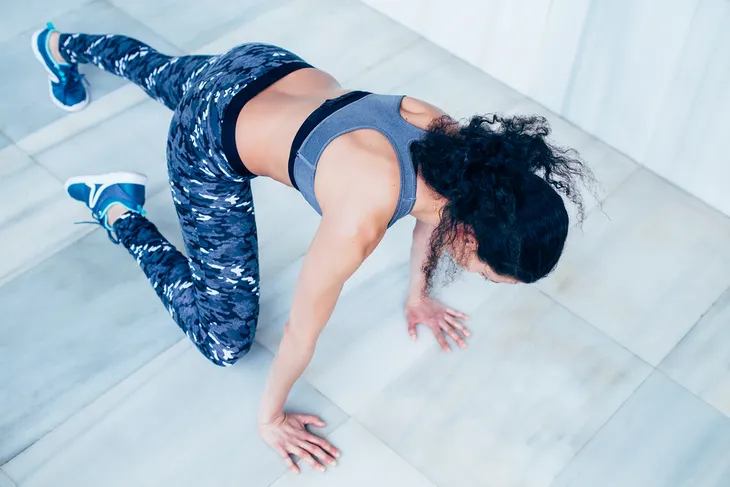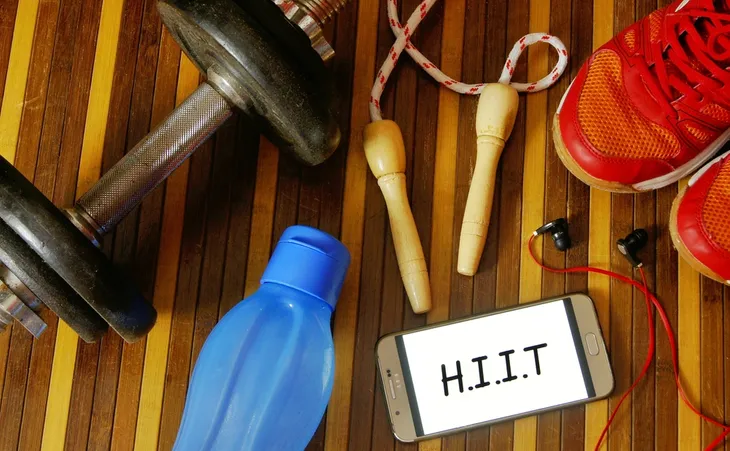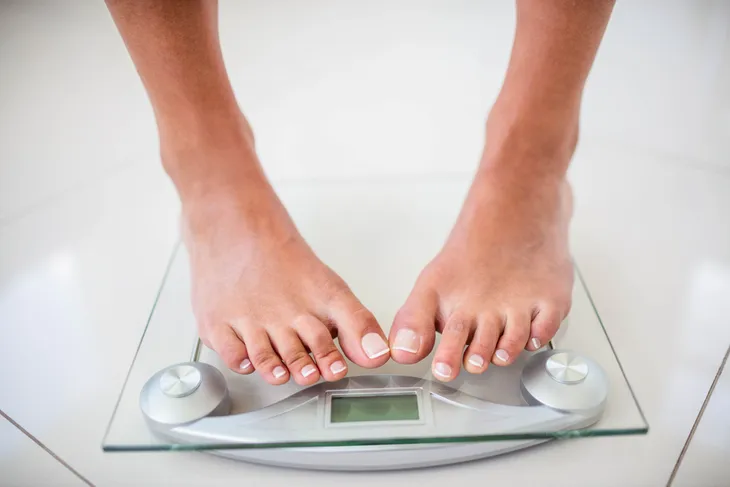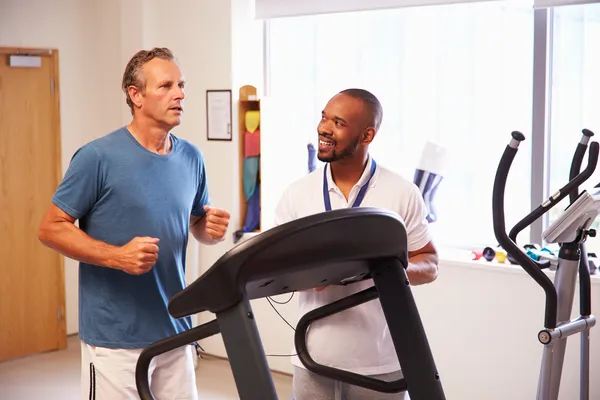Most of us know that getting roughly 2.5-hours of moderate physical activity each week is an important part of staying healthy. But so few of us actually reach that goal. Why? The explanation usually has a lot to do with time limitations, particularly for men and women with busy jobs and growing families.
That’s why high-intensity interval training, or HIIT, is such a useful way to reach your fitness goals. Rather than spending longer doing more moderate exercises, it’s a system that recommends doing difficult, or intense, activities over a shorter period of time. In the end, it’s an excellent way for individuals with major time constraints — whatever those limitations may be — to shed calories and fat and feel better both mentally and physically.
Save Time
Lack of energy, lack of time: those are almost certainly the two most frequently used excuses for not getting enough physical exercise. And it’s fairly understandable: in today’s economy, many people feel they have to go above and beyond when it comes to hours worked in order to prove themselves to their superiors. At the same time, those of us with growing families and longer commutes find our total number of free hours shrinking all the time.
This is exactly why high intensity interval training is so useful. It’s built from the ground-up with time savings in mind, as so many of the exercises are designed to get the heart pumping and calories burning in as little time as possible. The end result: an extremely time-effective workout. Generally speaking, a HIIT workout lasts anywhere from ten to thirty minutes, a relatively short amount of time compared to many workout styles.
It’s Effective
Although high-intensity interval training workouts are generally much shorter than other exercise regimens, they’re not at all less effective in burning calories and fat. In fact, research has shown that HIIT workouts may actually be more effective because of the rapid jolt they give the cardiovascular system and muscles.
Of course, this will depend in large part on each individual’s definition of high intensity and the exercises they add to their workouts. Some of the most effective routines include burpees, jumping squats, chin-ups, sprinting, jump rope, and intervals.
It’s Flexible
One of the great things about a high-intensity interval training workout is that it’s highly flexible and customizable, meaning you can integrate just about any type of exercise so long as it gets the heart pumping quickly and keeps your heart rate up throughout the workout.
So, for instance, if you’re a fan of cycling but hate running, you can skip the sprinting on two feet and focus on pushing yourself on the bike. That could mean simply doing intervals of hard biking in a sprint-like fashion, or you could focus on climbing hills on your bike — always an adequate challenge. Or, if you don’t mind throwing on running shoes but hate going outside, you could run the stairs in your apartment building or do burpees in your living room.
It Boosts Your Metabolism
Your metabolism plays an important role in helping you maintain a healthy body weight. It determines how many calories your body will burn at rest and is usually influenced by the amount of exercise you get on a regular basis, in addition to genetics and other, more specific health factors.
In general, you can improve your metabolic rate by exercising on a regular basis, such as three to five days per week. But it may be more valuable to spread your exercise out over the week and perform high-intensity interval training workouts that last less time: like ten minutes to half an hour. That’s because HIIT workouts are very effective at rapidly increasing heart rate and keeping it there, and that can help jump-start one’s metabolism and help them burn calories even when they’re not getting physical exercise.
It Burns Fat Fast
Fat may be the most disliked three-letter word in the dictionary. Although all of us have some fat, it seems like most of us feel it’s important to work towards losing more of it. And that’s tough, particularly as many of our favorite foods are either high in fat or carbohydrates, which are often converted to fat when not burned off through physical exercise.
By upping the heart rate quickly and effectively — and then keeping it high — high-intensity interval training can burn fat faster. That’s because keeping the heart rate up is a crucial part of burning fat; in fact, some popular moderate exercises, like walking or cycling, may not burn much fat at all. The key is to get the heart rate up and keep it there, though the length of time, thankfully, doesn’t have to be extensive.
Lose Weight Quickly
In one study examining high-intensity interval training, individuals who did HIIT workouts at least three times each week for an average of 20 minutes each session lost more than four pounds, or about two kilograms, in a twelve-week period. Interestingly, none of the participants changed their diets, so it’s possible HIIT is capable of helping people with less healthy lifestyles manage their weight better than more traditional, less intense exercise routines.
And that’s not all: the researchers who held the experiment found that those participants who did HIIT were more likely to remove visceral fat, or fat that surrounds many of the major organs. It’s widely seen by medical professionals as the most problematic types of fat. In essence, individuals with high levels of visceral fat face the highest chance of developing serious health problems, like heart disease.
Build Muscle
Although the end goal of most high-intensity interval training routines is to burn fat and calories and help an individual maintain their weight or shed a few pounds, there’s still a good chance that regularly engaging in HIIT workouts can help an individual build muscle and become stronger.
For example, an individual who focuses on leg-based high-intensity interval training routines, such as jumping squats, side jumps, and frog jumps, is likely to build muscle throughout the legs, from the quads to hamstrings to the adductors. And this can help an individual manage pressure on this area, such as by playing sports that activate those muscles regularly. That said, if your primary goal is building muscle rather than burning fat and calories, weight training is the better choice.
Build Endurance
Ever taken the stairs at work or school because the elevator was busy or under maintenance? If you’ve been exercising regularly using high-intensity internal training workouts that test your ability to manage higher pressure on the cardiovascular system, then you’ll have a much better chance of getting to your floor without need to take a break in the stairwell.
Then again, if you rarely exercise, or even if your favorite exercises are moderate in their orientation, then you may find yourself wheezing and panting by the time you get to the top. It’s not a great feeling to know that, should you ever need to do something physical like running up stairs, such as in an emergency, your lungs and heart might hold you back.
Boost Oxygen Intake
Ever watched the Tour de France and wondered how those guys can climb huge hill on the bikes without tiring and falling over? It’s because they’ve trained for years to improve their overall oxygen intake, meaning their bodies can actually bring in more air than the average person, thereby sending more oxygen into the bloodstream. It’s a recipe for success when it comes to just about any high-intensity interval training workout.
That means HIIT may be more effective in helping you build your overall oxygen intake better than more leisurely rides or runs over a long distance but at a steady rate. If this is how you’ve approached your favorite cardiovascular activity in the past but feel a need to push yourself to the next level, give high-intensity interval training a try.
Reduce Heart Rate
As we age, our heart can face a variety of pressures in the form of extended period of sitting — a common problem for people who work in offices — and obesity, which can make every little movement a challenge. Additionally, adult activities like drinking and smoking can put even more weight on the heart.
This presents some significant health problems because it means the heart works at a faster rate when an individual is at rest than it should be. To limit pressure on the heart and avoid pushing it past its limitations, resulting in a heart attack or stroke, individuals need to work towards reducing their heart rate. And unlike more casual or moderate exercise routines, high-intensity interval training sessions have been shown to help reduce heart rate, helping take pressure of the heart over the long term.
Lower Blood Pressure
Many older adults have been told by their doctors that their blood pressure levels are a problem. This is often tied to one’s diet and level of exercise — the more high-fat, high-calories foods one eats, and the less exercise they get, the better their chances of developing high blood pressure, which places more pressure on the heart and can lead to serious problems like heart attack or stroke.
Again, high-intensity interval training can come to the rescue. It’s been shown to help reduce blood pressure when HIIT workouts were performed on a regular basis of a two-month period. This has the potential to help people with a family history of heart disease and high blood pressure limit their chances of developing serious heart-related issues.
Help Maintain Blood Sugar Levels
One of the fastest-growing health problems in the United States involves a steadily growing number of people with late-onset diabetes, otherwise known as type-2 diabetes. Unlike type-1 diabetes, this form of diabetes tends to form in later life and is often the result of a lifestyle that features an unhealthy, high-fat, high-calorie diet with minimal physical activity.
Individuals diagnosed with type-2 diabetes and high blood sugar are often required to take insulin and other medications to keep some of diabetes’ more ugly results, like loss of limbs or even life, at bay. But research shows that exercise, and especially high-intensity interval training workouts, can really help diabetes patients regulate their blood sugar levels.















